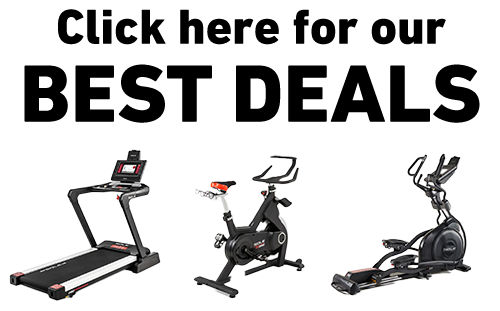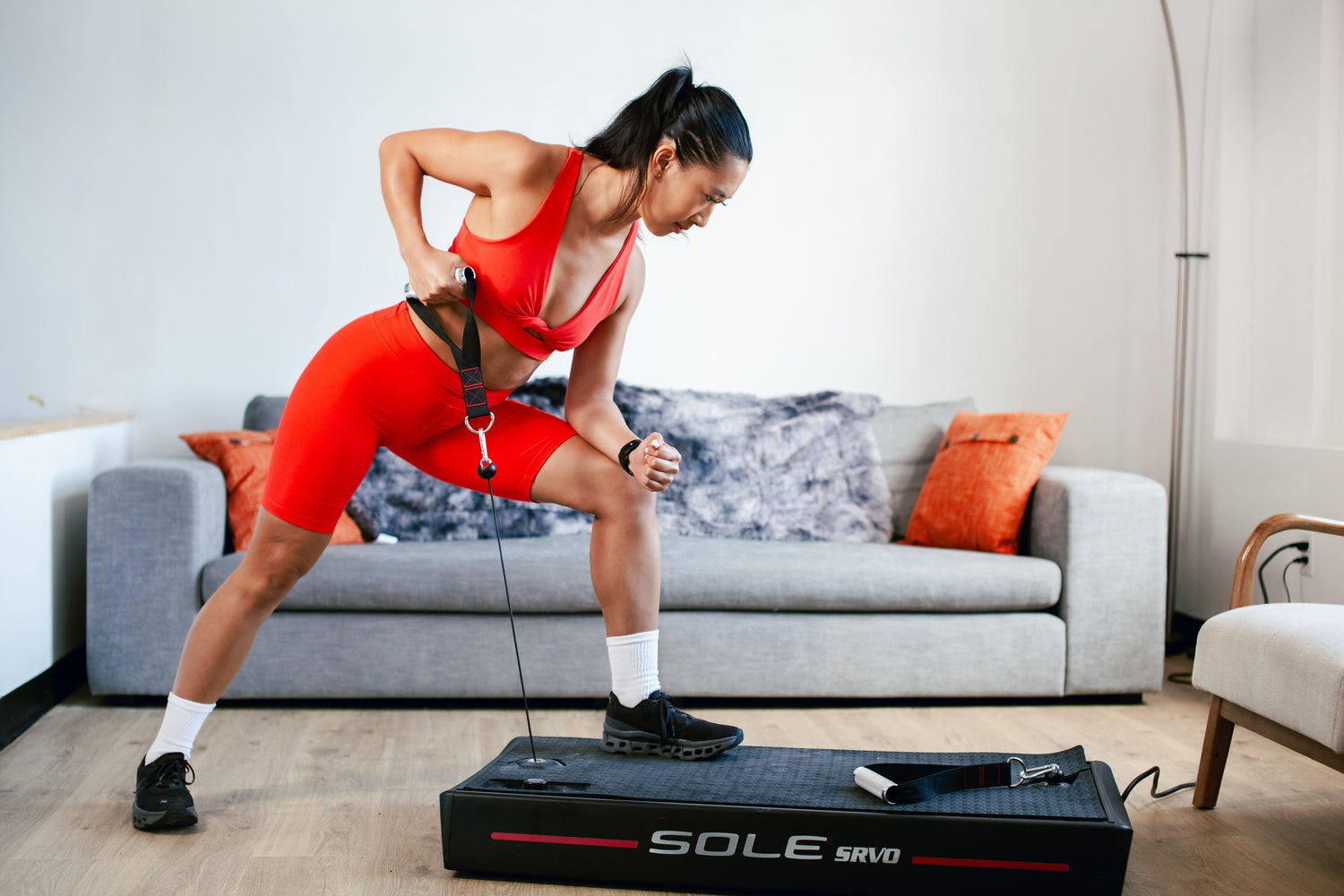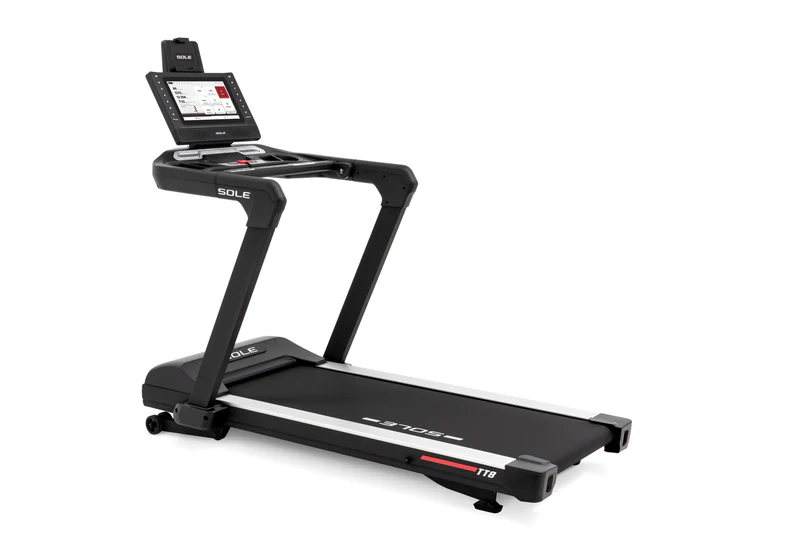Key Takeaways
- Proper warming up before workout routines prevents muscle injuries, tears, and strains by increasing blood flow and muscle elasticity, making it essential for safe and effective exercise sessions.
- Dynamic movements that mimic your planned workout exercises should form the core of your warm-up, priming specific muscle groups and movement patterns for optimal performance and injury prevention.
- Light cardiovascular activity for 5–10 minutes increases heart rate, core body temperature, and delivers oxygen-rich blood to working muscles, preparing your body for intense training demands.
- SOLE Fitness's comprehensive equipment lineup, including treadmills with advanced cushioning and the SOLE+ app with thousands of warm-up routines, provides the perfect platform for incorporating effective pre-workout preparation into your fitness routine.
The Cold Truth: What Happens When You Skip Your Warm-Up
Have you ever found an old balloon leftover from a birthday party? Was it deflated, a little crusty, probably a bit brittle as well? When we don't properly warm up before a workout, especially after some time off, the same can be said about our muscles. And if we try to stretch an old balloon, or flex a forgotten muscle, we'll find that both can tend to snap.
To prevent a pulled muscle, tear, or injury, we should always begin our workouts with a warmup. A combination of myofascial release and active movements can prime our muscles, get the blood flowing, and decrease our risk for injury.
Unlike party balloons, your muscles aren't easily replaceable. Slow down and make a warm-up a non-negotiable part of your workout regimen; you won't regret it.
|
Premium Home Gym Equipment with Award-Winning Quality! Complete Your Home Gym:
Why Choose SOLE: ✓ Commercial-grade quality for home use 30-Day Money-Back Guarantee: Love it or return it, no questions asked. |
4 Major Benefits of Proper Warm-Ups
1. Boosts Blood Flow to Working Muscles
When you begin your warm-up, your cardiovascular system gradually increases blood delivery to your muscles.
This enhanced circulation brings oxygen and nutrients that fuel muscular work while simultaneously removing metabolic waste products. The result is greater endurance, better recovery between sets, and enhanced overall exercise capacity.
2. Increases Core Body Temperature
As the name suggests, warming up literally warms your body. This temperature increase has profound effects on performance by enhancing enzymatic activity within your muscles.
When your core temperature rises by even 1–2 degrees, the enzymes that control energy production work more efficiently, allowing for faster energy release during intense exercise.
3. Enhances Muscle Elasticity and Joint Mobility
Proper warming increases the elasticity of muscles, tendons, and ligaments, allowing them to stretch further without damage.
This enhanced elasticity translates directly to improved range of motion, which enables better exercise technique and more complete muscle recruitment.
4. Mentally Prepares You for the Workout Ahead
A warm-up serves as a crucial transition period between your daily activities and focused training.
Warming up creates a mental shift vital for workout quality, allowing you to leave behind work stress, family responsibilities, and other distractions.
The rhythmic, progressive nature of warming up creates a meditative effect that centers your attention on bodily sensations and movement patterns. This improved focus translates to better mind-muscle connection, enhanced technique awareness, and greater overall workout intensity.
How to Warm Up Properly for Any Workout
The 5-Minute Cardio Primer
Begin with 3–5 minutes of light cardiovascular activity to increase heart rate, respiration, and core temperature. This could be light jogging, rowing, cycling, jumping jacks, or any rhythmic activity that engages large muscle groups.
The intensity should be modest, around 40–60% of your maximum effort, just enough to break a light sweat without causing fatigue.
For morning workouts or sessions in cold environments, extend this phase to 5–7 minutes to overcome the natural morning stiffness or environmental chill.
Dynamic Stretching vs. Static Stretching
Dynamic stretching, which involves controlled movement through a joint's complete range of motion, should form the core of your warm-up routine.
Unlike static stretching (holding a stretch in one position), active movements enhance blood flow while simultaneously improving mobility. Include movements like leg swings, arm circles, walking lunges, torso twists, and high knees to prepare your body for action.
Each movement should be performed for 8–12 repetitions, gradually increasing in range and speed as your muscles warm up.
Common Warm-Up Mistakes to Avoid
Rushing Through Movements
One of the most prevalent mistakes is treating the warm-up as a checkbox to hurry through rather than an integral part of training.
When you rush through movements without focus or proper execution, you miss the neuromuscular benefits that come from mindful practice.
Quality matters more than quantity here, six properly performed mobility exercises will benefit you more than fifteen rushed, sloppy movements.
Static Stretching Cold Muscles
The practice of starting workouts with static stretching is outdated.
Holding stretches with cold muscles can actually decrease power output. This performance decrease happens because static stretching does not increase blood flow to muscle, which is exactly the opposite of what you need before explosive or strength-based activities.
Static stretching has its place, specifically after workouts or as a standalone flexibility session, but it should never be your primary warm-up method.
Using the Same Warm-Up for Every Workout
Different workouts stress different energy systems and muscle groups, yet many people use identical warm-ups regardless of their training focus.
This one-size-fits-all approach fails to provide specific preparation for the demands ahead. While the general principles remain the same, the specific movements should change to target the relevant areas and movement patterns you'll be using that day.
Maximizing Your Warm Up Before Workout with SOLE's 25-Year Legacy
For over 25 years, SOLE Fitness has been engineering equipment that transforms warm-up routines from mundane necessities into engaging, effective workout components.
SOLE Fitness’s comprehensive equipment lineup supports every aspect of proper warm-up protocols. No matter if you’re beginning with light cardio on our cushioned treadmills, engaging in active movements guided by our SOLE+ app's thousands of warm-up routines, or using our strength equipment for activation exercises, we provide the tools that make effective preparation accessible and consistent.
Combined with our complimentary curbside shipping and commitment to exceptional customer service, SOLE ensures your warm-up and fitness success from day one.
Don't let cold muscles derail your fitness goals. Invest in equipment designed by professionals who understand that great workouts start with great preparation.
Frequently Asked Questions (FAQ)
How long should I warm up before workout sessions?
An effective warm-up should last 15–20 minutes for most workout types, though this can vary based on your fitness level, the intensity of your planned workout, and environmental factors.
Begin with 5–10 minutes of light cardiovascular activity, followed by 5–8 minutes of active exercises, and conclude with 5–10 minutes of sport-specific preparation.
Cold weather or early morning workouts may require longer warm-up periods, while shorter 10-minute warm-ups might suffice for low-intensity activities.
What's the difference between warming up and stretching?
Warming up involves dynamic movements and light cardiovascular activity designed to increase blood flow, raise muscle temperature, and prepare your body for exercise.
Stretching, particularly static stretching, involves holding positions to improve flexibility and is best performed after your workout when muscles are already warm.
Dynamic stretching can be part of your warm-up, but static stretching before exercise may actually decrease performance and increase injury risk.
Should I warm up differently for morning versus evening workouts?
Yes, morning workouts typically require longer, more gradual warm-ups because your body temperature is lower and your muscles are stiffer after sleep.
Your joints may also have less synovial fluid production in the morning. Evening workouts can often use shorter warm-ups since your body has been active throughout the day.
Consider adding 5–10 extra minutes to morning warm-ups and include gentle mobility work to combat overnight stiffness.
Can I skip warming up if I'm short on time?
Never skip your warm-up entirely, but you can modify it for time constraints.
A minimum 5–10 minute abbreviated warm-up focusing on the most critical elements, light cardio and movements specific to your workout, is better than no warm-up at all.
However, consistently skipping proper warm-ups increases your injury risk and may compromise your workout effectiveness. Consider adjusting your main workout duration to accommodate proper preparation time.
How can SOLE equipment help improve my warm-up routine?
SOLE Fitness's equipment lineup perfectly supports comprehensive warm-up protocols with treadmills featuring advanced cushioning for joint-friendly cardio preparation, ellipticals providing full-body low-impact activation, and bikes offering controlled lower body warm-up options.
Our SOLE+ app includes thousands of guided warm-up routines designed by professional trainers, ensuring you have structured, effective preparation every time.




Leave a comment
This site is protected by hCaptcha and the hCaptcha Privacy Policy and Terms of Service apply.